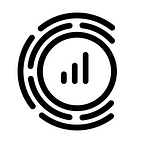Guide on How to Trade Covesting (COV) on Uniswap Decentralized Exchange
The use of decentralized exchanges (DEX) differs significantly from the more traditional centralized exchanges. While the difference is more pronounced when it comes to the trade patterns, the liquidity or cash flow with which both operate also differs significantly. In any DEX such as Uniswap, market participants provide cash flow, while in centralized exchanges like Binance, the company supplies liquidity.
Getting started on either of the exchanges may be intimidating to new users. As such, we are dedicating this article to provide details on how to trade Covesting (COV) tokens on Uniswap. In this article, we would talk about;
- The two Uniswap domain types,
- How to connect your Software and Hardware Wallets
- How to Swap COV to other tokens and vice versa, and;
- How to provide liquidity to Uniswap Pool.
At Covesting, we are always committed to bringing our token holders the right resources to maximize value. Follow us on our social media handles, including Telegram, Facebook, Twitter, to get the first updates as it happens.
The two Uniswap Domain Types
Uniswap is one of the foremost DEXs around in decentralized finance (DeFi) today, and per its growth, the platform has two dedicated domains to serve its users. These domains include;
- The information hub at https://uniswap.info/ where users can find check out the prices of listed tokens, trading volumes, swap pairs, and more, and;
- The main exchange domain at https://app.uniswap.org/, through which swapping, liquidity provision, and other activities occur.
Each of these domains is functional and comes in handy at all times. This guide pays more attention to the https://app.uniswap.org/ domain.
How to connect your Software and Hardware Wallets
To connect your wallet, visit the main exchange domain and in the top corner of the homepage, click on the “Connect to a wallet.” This interface pops up;
Using a software wallet that supports WalletConnect, such as TrustWallet, click on the “WalletConnect” icon. With the wallet app installed on your phone, scan the QR-Code to connect you directly to the Uniswap exchange. Once thriving, you will be able to see proof that you are connected at the top right corner (with the wallet keys visible), as shown in the picture below.
The process for a hardware wallet is also relatively easy but best with the Brave Browser. On the Brave Browser, Click on “Connect to a wallet.” After that, select the “Install Metamask” and follow the instructions.
Once you have installed the Metamask, surf through to the Settings/Crypto wallets on the Brave Browser. Through the pop-up that becomes revealed, click on “Connect Hardware Wallet” as shown below;
The Brave Browser will indicate that the connection is successful and visible at the top right-hand corner alongside your current wallet balance.
How to Trade (Swap) COV Tokens
After the wallets are duly connected, the Uniswap exchange swapping interface looks like the picture below;
The balance shown atop the ETH icon will be the total amount of Ethereum resident in your wallet when you want to initiate the transaction. You will then need to select the token you want to swap to, which in this case, maybe Covesting (COV). If the COV token is not part of the tokens list, you can add it by pasting the COV Token Contract Address found here in the search box or importing it from Coingecko.
Once you have added the token, you can select the amount you want to swap and complete the transaction.
Earn Fees By Providing Liquidity
Traders or users of Uniswap and other decentralized exchanges keep the platforms running by providing liquidity. Liquidity provision is how users deposit a portion of their tokens to support a particular token pair in a trading pool.
In practice, if there is a pool that contains the ETH/COV pair, users can deposit a certain amount of Ethereum and Covesting into the pool so that traders can have enough funds to withdraw or swap whenever they need to. There is no defined ratio for providing this liquidity, and it may be 10 ETH to 50 COV tokens or 100 ETH to 1000 COV tokens.
The Pool interface on Uniswap looks just as shown below;
When you complete a Swap trade, the liquidity pool often experiences an imbalance, and the current ratio determines the price at that time.
It is worth noting that liquidity providers are entitled to incentives from trader’s fees using the pool. The value of reward any liquidity provider gets is ultimately dependent on the share percentage of the liquidity provided. Whenever a trade occurs, a 0.3% fee is charged to the transaction sender. This fee is distributed pro-rata to all LPs in the pool upon completion of the trade. Check out this article to learn better how fees are generated and distributed among Liquidity Providers.
Liquidity Providers on Uniswap or any DEX are not immune to losses. Liquidity providers should note that while these liquidity provisions can serve as a way to earn money, the pools may suffer impermanent loss, as explained here.
To Cap it All
Decentralized exchanges may be new to the entire financial landscape, but they present one of the most accessible interfaces for users to interact with. While we at Covesting remain committed to embracing the new trends as they are unraveled in the crypto space, we would continue to bring more educational materials to help our investors and token holders stay abreast these trends.
For any specific questions, connect with us through our communities, and we will be available to provide the help you need.
Yours,
Covesting team
